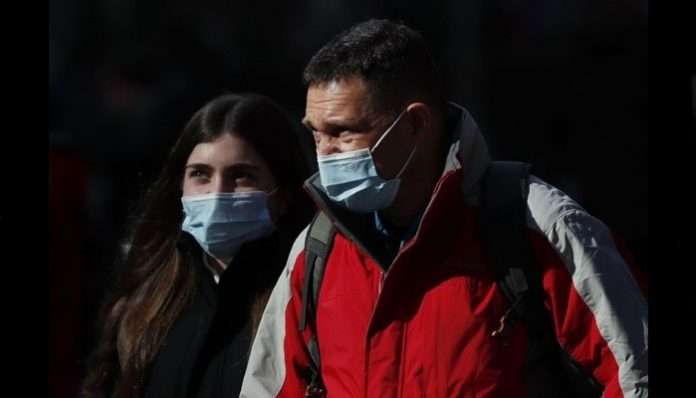
Feb. 14 (UPI) — COVID-19 cases have continued to subside throughout the United States, while deaths have also settled after increasing rapidly amid surges of infections brought on by the Omicron variant.
The United States reported a daily average of 178,705 new COVID-19 cases, down 67% over 14 days, according to data gathered by The New York Times, as individual states have begun to loosen masking mandates and other restrictions to mitigate the spread of the virus and health officials have indicated the peak of Omicron infections has passed.
Every U.S. state and territory has reported a decrease in new cases within the past 14 days led by Oklahoma at 84%, while 22 states, the U.S. Virgin Islands and Puerto Rico have reported declines of 70% or greater, according to the New York Times.
On Saturday, New York reported only 4,232 compared with 90,132 on Jan. 8.
The seven-day moving average for new deaths also declined 6.6% to 2,241 as of Saturday, after climbing 4.4% the previous week, according to the Centers for Disease Control and Prevention.
Overall the United States has reported world-leading totals of 77,715,853 cases and 919,336 deaths since the start of the pandemic, according to tracking by Johns Hopkins University.
COVID-19 hospitalizations also fell about 3% with 85,534 inpatient beds in use for COVID-19 patients, representing 11.25% of inpatient beds in use at about 6,000 reporting hospitals nationwide, according to Department of Health and Human Services data. The record was 160,113 on Jan. 20.
Overall 77.72% of inpatient hospital beds at 6,155 hospitals were in use, a slight increase from 77.16% last week.
In an interview with Financial Times last week, Dr. Anthony Fauci signaled a new phase of the COVID-19 pandemic, noting restrictions to combat the virus could end soon but could also return if needed to prevent future surges.
“As we get out of the full-blown pandemic phase of COVID-19, which we are certainly heading out of, these decisions will increasingly be made on a local level rather than centrally decided or mandated,” said Fauci, director of the National Institute of Allergy and Infectious Diseases. “There will also be more people making their own decisions on how they want to deal with the virus.”
New York Gov. Kathy Hochul on Wednesday lifted the state’s “mask-or-vaccine” requirement for indoor businesses. On Feb. 28 Illinois will lift its indoor mask mandate and Massachusetts will lift a mask requirement for schools.
As of Saturday, 251,926,344 people, or 75.9% of the U.S. population, have received at least one dose of a COVID-19 vaccine, according to the CDC. A total of 213,734,419 people, or 64.4% of the population, have completed their vaccine regimen and of those people, 42.8% have received an additional booster shot.
Fauci highlighted vaccines as an important tool to ensure the elimination of COVID-19 restrictions but said he did not expect Americans to need regular boosters to stave off the virus.
“It will depend on who you are,” he said. “But if you are a normal, healthy 30-year-old person with no underlying conditions, you might need a booster only every four or five years.”






